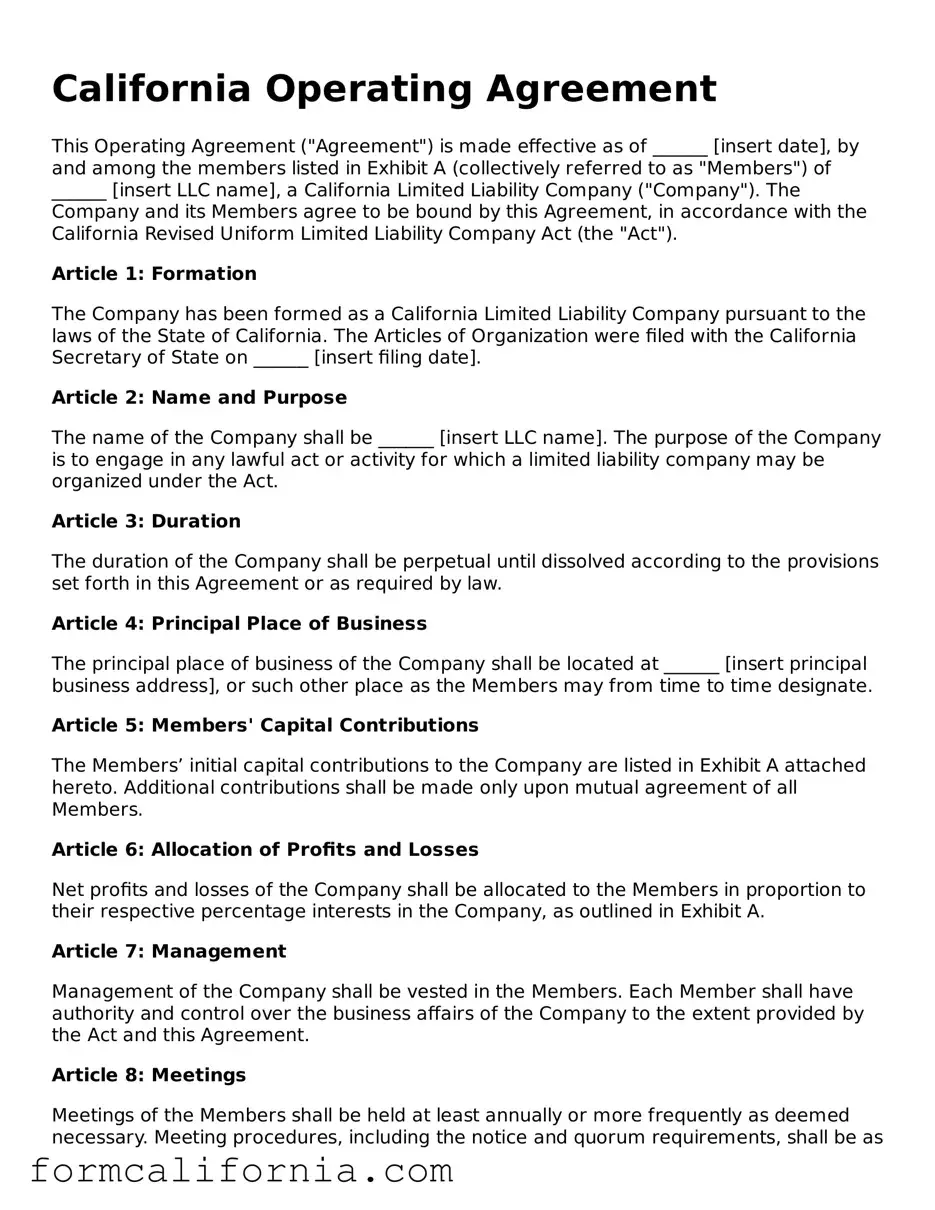California Operating Agreement
This Operating Agreement ("Agreement") is made effective as of ______ [insert date], by and among the members listed in Exhibit A (collectively referred to as "Members") of ______ [insert LLC name], a California Limited Liability Company ("Company"). The Company and its Members agree to be bound by this Agreement, in accordance with the California Revised Uniform Limited Liability Company Act (the "Act").
Article 1: Formation
The Company has been formed as a California Limited Liability Company pursuant to the laws of the State of California. The Articles of Organization were filed with the California Secretary of State on ______ [insert filing date].
Article 2: Name and Purpose
The name of the Company shall be ______ [insert LLC name]. The purpose of the Company is to engage in any lawful act or activity for which a limited liability company may be organized under the Act.
Article 3: Duration
The duration of the Company shall be perpetual until dissolved according to the provisions set forth in this Agreement or as required by law.
Article 4: Principal Place of Business
The principal place of business of the Company shall be located at ______ [insert principal business address], or such other place as the Members may from time to time designate.
Article 5: Members' Capital Contributions
The Members’ initial capital contributions to the Company are listed in Exhibit A attached hereto. Additional contributions shall be made only upon mutual agreement of all Members.
Article 6: Allocation of Profits and Losses
Net profits and losses of the Company shall be allocated to the Members in proportion to their respective percentage interests in the Company, as outlined in Exhibit A.
Article 7: Management
Management of the Company shall be vested in the Members. Each Member shall have authority and control over the business affairs of the Company to the extent provided by the Act and this Agreement.
Article 8: Meetings
Meetings of the Members shall be held at least annually or more frequently as deemed necessary. Meeting procedures, including the notice and quorum requirements, shall be as set forth by the mutual agreement of the Members and in accordance with the Act.
Article 9: Amendments
This Agreement may be amended only by a written agreement signed by all Members.
Article 10: Dissolution
The Company may be dissolved with the consent of Members holding a majority interest in the Company or as otherwise required by law. Upon dissolution, the Company’s affairs shall be wound up in accordance with the Act.
IN WITNESS WHEREOF, the undersigned have executed this Operating Agreement as of the date first above written.
- ____________________ [Member Name]
- ____________________ [Member Name]
- ____________________ [Member Name]
Exhibit A: Members and Capital Contributions
- ____________________ [Member Name] - $__________ [Amount]
- ____________________ [Member Name] - $__________ [Amount]
- ____________________ [Member Name] - $__________ [Amount]
